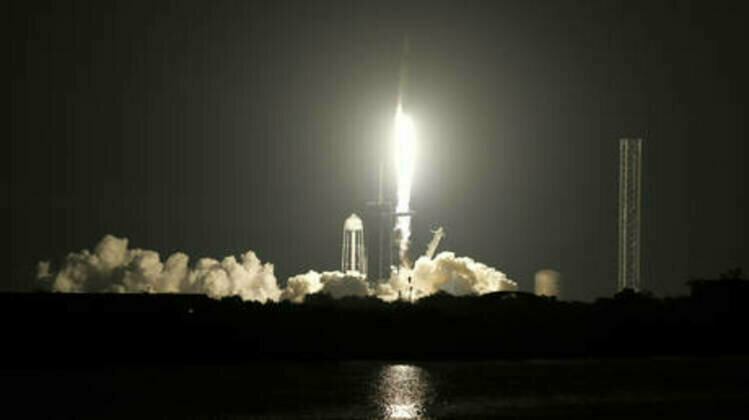

The device transmits solar energy back down to Earth in electromagnetic waves
The US Naval Research Laboratory launched a laser power beaming device into space on Wednesday. Though the technology is still in its infancy, proponents say it could one day fuel extraterrestrial colonies, or alleviate energy shortages on earth.
The Space Wireless Energy Laser Link (SWELL) blasted off for the International Space Station aboard a SpaceX Cargo Dragon spacecraft on Wednesday, according to statements from the US Navy and Space Force. The launch was carried out by SpaceX on behalf of NASA and the Department of Defense, with the Dragon vehicle carrying seven other experimental devices to the space station for the Pentagon.
In development since last year, the SWELL delivers energy harvested from space-based solar panels to earth in the form of electromagnetic waves. As no mass is transported, power delivery is almost instant.
Similar devices are currently being designed by private companies, although the technology has not yet been tested in space.
“This is the next step in extending this capability for space, lunar, and planetary applications,” SWELL Program Manager Chris DePuma said in a statement. DePuma predicted that the technology could one day be a “critical enabler” of powered settlements on the moon and elsewhere.
“Power beaming might also be used for distributing power for and around Earth, including from satellites that collect solar energy in space,” he added.
Power beaming is not without its limitations, however. At present, a single laser beaming device can transmit 1-10 milliwatts of power, according to a 2021 report by Forbes. The average onshore wind turbine, by contrast, has a capacity of 2.5-3mw.
Larger microwave beaming systems could theoretically transmit more than a gigawatt of power to Earth-based receivers. Although this would be enough to power a large city, the system would have to be mounted to a satellite located 35,000 (21,747 miles) kilometers out in space, making repairs virtually impossible.
Nevertheless, without our planet’s atmosphere, inclement weather, and day and night cycles, it is estimated that space-based solar arrays could generate 40 times as much power as those on Earth.
The US is not the only world power interested in technology. China is currently preparing to test a beaming device of its own in the coming years, and aims to have a space-based power plant up and running by the 2030s.
24World Media does not take any responsibility of the information you see on this page. The content this page contains is from independent third-party content provider. If you have any concerns regarding the content, please free to write us here: contact@24worldmedia.com

A Brief Look at the History of Telematics and Vehicles

Tips for Helping Your Students Learn More Efficiently

How To Diagnose Common Diesel Engine Problems Like a Pro

4 Common Myths About Wildland Firefighting Debunked

Is It Possible To Modernize Off-Grid Living?

4 Advantages of Owning Your Own Dump Truck

5 Characteristics of Truth and Consequences in NM

How To Make Your Wedding More Accessible

Ensure Large-Format Printing Success With These Tips

4 Reasons To Consider an Artificial Lawn

The Importance of Industrial Bearings in Manufacturing

5 Tips for Getting Your First Product Out the Door